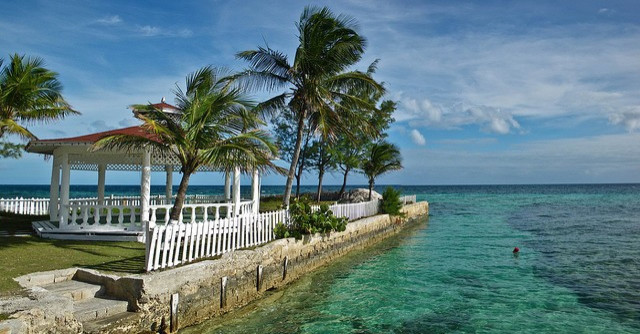Beyond Nassau: The Undiscovered Bahamas

The Bahamas is an island chain made up of 700 islands stretching over 100,000 square miles in the Western Atlantic Ocean. The islands are made up entirely of calcium carbonate, which is produced by the organisms living on the coral reefs under the islands. You can thank them for the crystal clear turquoise blue waters (with visibility over 200 ft) and pearly white sandy beaches the Bahamas are famous for.
Over the years, these paradisiacal islands have become a tropical vacation hot spot for travelers all around the world, but there are still a few spots left on the 15 main islands that tourists have yet to overrun. Check out some of the more secluded areas of the Bahamas.
Cat Island
Cat Island, Southern Bahamas is one of the outlying islands of the Bahamas and one of the least populated. Fernandez Bay Village and its ten huts are the closest thing to urbanity. There is only one phone in the entire resort, so it is the perfect place to get away from the world for an afternoon.
Cat Island is also home to the highest point in the Bahamas, Mount Alvernia. Although it is only 206 ft (63m) above sea level, it's high for the islands. After a short trek, waiting at the top is the beautiful stone Hermitage Monastery built by Monsignor Jerome Hawkes. Hikers can look around the old monastery and out onto the stunning views of the Atlantic Ocean.
Inagua Island
The third largest and the most southerly island in the Bahamas, Inagua is home to the one of the largest flamingo bird sanctuaries in the world. This hot, dry island is a haven for birdwatchers and naturalists. The flamingos feed around the wetlands of Rosa Lake and live in a protected 287-square-mile reserve called the Inagua National Park. Along with flamingos, wild cattle, donkeys, boars and over 140 species of resident and migrating birds live on the island.
There are also a number of buildings from the 1800s including churches and a lighthouse, in addition to a museum and caves to explore.
Andros
Andros is the largest of all the Islands, but the least populated for its size. It is also home to the third largest barrier reef in the world- over 140 miles long. This makes it the perfect backdrop for superb swimming, diving and snorkeling amid thousands of unique, colorful, beautiful fish and marine life. Andros is made up of three major islands: North Andros, Mangrove Cay, and South Andros as well as hundreds of cays adjoined by mangrove estuaries and tidal swamp lands.
The islands are full of lush greenery, wild flowers and over 200 species of birds. This large island has been virtually untouched by tourists and is a perfect place to get back to nature.
Lucayan National Park
Lucayan National Park on Grand Bahama Island is surrounded by mangrove trees, sandy beaches and coral filled waters. Visitors can take a kayak tour over 42 liquid acres of the park, through estuaries and streams and around some of the cave formations of one of the longest-known underwater cave systems in the world, with over six miles of caves, caverns, and tunnels charted.
After you check out the stalactites and stalagmites, head over to secluded Gold Rock Beach for a seaside picnic lunch under cocoplum, sabal palm, cinnecord, sea grape, casaurina and other tropical trees.
Mayaguana Island
Uninhabited until 1812, Mayaguana Island still only has around 300 permanent residents, making it the least populated and least visited of the islands. The three main settlements are populated mostly by farmers and fishermen and still retain much of the authentic old-world Bahamian flair that most other islands have forgotten. The main form of communication on Mayaguana Island is the mail boat, which transports the mail once a week.Visitors can stay with one of the native families who have opened up their home to guests, or in the island's sole commercial resort, Baycaner Beach Resort.
For extreme outdoorsmen, the eastern half of the island is completely undeveloped, without trails or signposts, for a true hiking challenge.
© Copyright IBTimes 2025. All rights reserved.





















